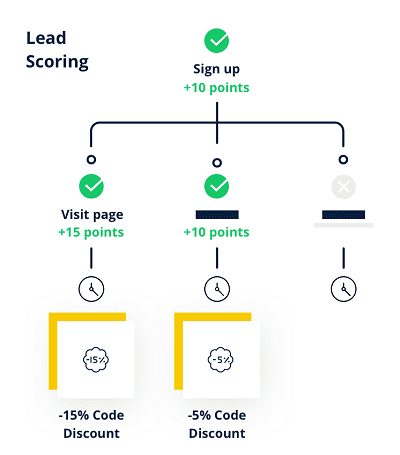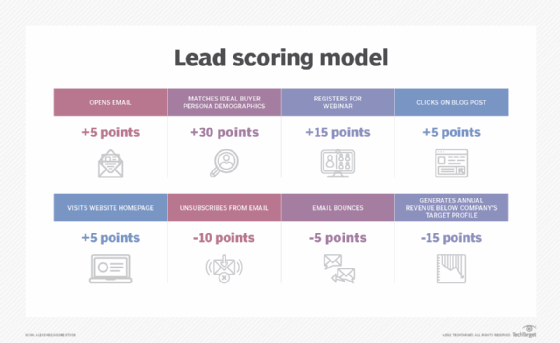| Sana Mirza

In the technology of information-pushed advertising and marketing and income, lead scoring has become a essential device for identifying the highest-value possibilities. As businesses acquire a growing quantity of inbound leads, it becomes critical to recognize which leads are well worth pursuing to optimize sources and pressure conversions. Lead scoring is a method that ranks potentialities primarily based on their engagement, demographics, and different elements, assisting sales teams attention at the maximum promising possibilities. Here’s everything you need to understand about lead scoring, from setup to optimization.
What is Lead Scoring
Lead scoring is assigning values, or "scores," to potential customers based on certain attributes and behaviors. These scores are calculated using factors like:
- Demographic Information: Age, company size, job title, location, etc.
- Behavioral Data: Actions taken on the company’s website, email interactions, downloads, and other engagement metrics.
- Firmographic Information: Industry, annual revenue, and company size for B2B businesses.
- Engagement Levels: Open rates, click rates, event attendance, and social interactions that indicate interest.
Each of these factors is assigned a score, and as a prospect interacts with a brand or fits certain ideal customer profile criteria, their lead score increases. The result,Sales teams can prioritize the leads with the highest scores, who are more likely to convert.
Why Lead Scoring Matters
Lead scoring helps companies focus on the leads most likely to generate revenue. This streamlined approach has significant benefits:
- Improved Sales Efficiency: Sales teams can focus on high-quality leads, reducing time spent on cold or uninterested prospects.
- Alignment Between Sales and Marketing: Lead scoring brings clarity and consensus on which leads are sales-ready, reducing friction between departments.
- Higher Conversion Rates: Focusing on top-tier leads results in better win rates, contributing to increased revenue.
- Enhanced Customer Experience: Lead scoring ensures that prospects receive communication tailored to their interest level, improving their experience with the brand.

Key Steps to Setting Up a Lead Scoring Model
- Identify Ideal Customer Profile (ICP) Attributes Define the attributes that your best customers share. For instance, if you're a B2B SaaS company, valuable criteria might include company size, industry, job role, and region. Establishing these criteria helps you assign higher scores to leads that fit your ICP.
- Select Behavioral Triggers Identify key behaviors that indicate a lead’s interest, such as visiting product pages, downloading whitepapers, or attending webinars. Different actions signal varying levels of interest, so assigning scores based on these can be insightful.
- Assign Scores to Each Attribute Assign weight to each attribute or action based on its impact on conversion. For example, actions closer to a purchase, like signing up for a demo, should carry higher scores than browsing a blog article.
- Automate Lead Scoring in Your CRM or Marketing Platform Most CRMs and marketing automation tools, like Dynamics 365, HubSpot, and Salesforce, offer lead scoring features. Setting up automated scoring saves time and ensures a consistent scoring process across all leads.
- Define Thresholds for Sales Readiness Determine a score threshold that qualifies a lead as sales ready. Leads above this threshold are passed to the sales team, while leads below can remain in marketing for nurturing.
- Continuously Refine Your Model As you gather more data, refine your scoring model. Regularly review conversion data to identify which criteria most accurately predict sales success and adjust your scoring weights accordingly.

Best Practices for Effective Lead Scoring
- Use Negative Scoring for Disqualification Apply negative scores for leads that exhibit low engagement or don’t fit your ICP. Actions like unsubscribing from emails, requesting to be removed from lists, or not engaging over time should reduce a lead's score.
- Prioritize Data Hygiene Ensure the data in your CRM is accurate and up-to-date. Poor data quality can skew lead scores and lead to wasted efforts on unqualified leads.
- A/B Test and Iterate Test different scoring models to find the one that aligns best with your business goals. A/B testing various scoring weights can reveal the most predictive factors for conversions.
- Leverage Predictive Lead Scoring for Enhanced Accuracy Many advanced CRMs, such as Dynamics 365 and Salesforce, use AI-driven predictive scoring that analyzes past conversions to predict the success of future leads.
Conclusion
Lead scoring is important for figuring out high-value prospects, increasing sales performance, and aligning sales and marketing efforts. By setting up a scientific method to scoring leads primarily based on demographic, behavioral, and engagement data, your commercial enterprise can beautify its recognition on leads which are maximum possibly to transform. In a information-pushed international, refining and optimizing your lead scoring version is fundamental to staying competitive, driving sales, and building long-time period client relationships.

